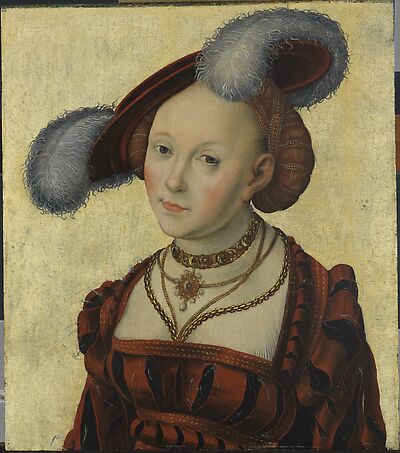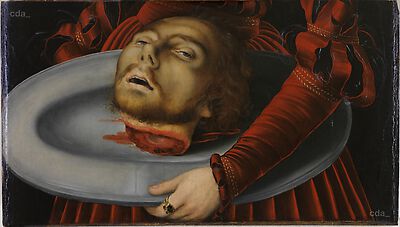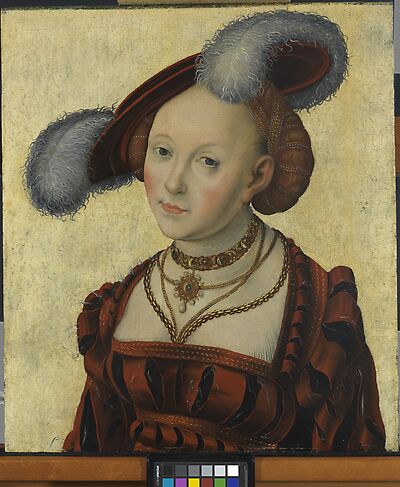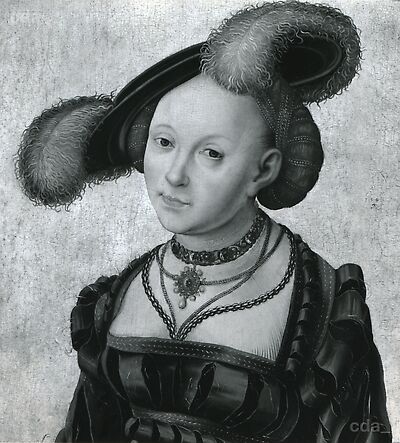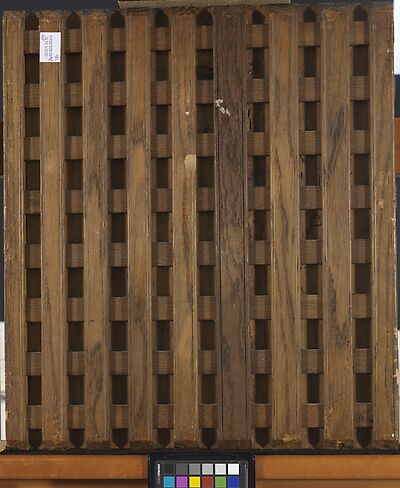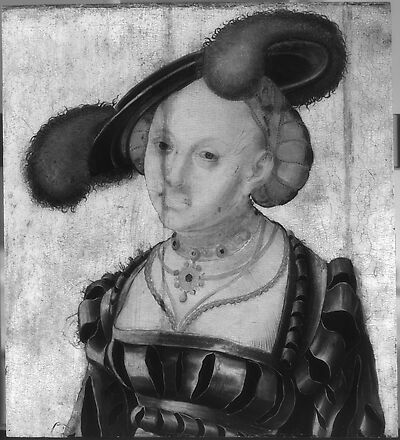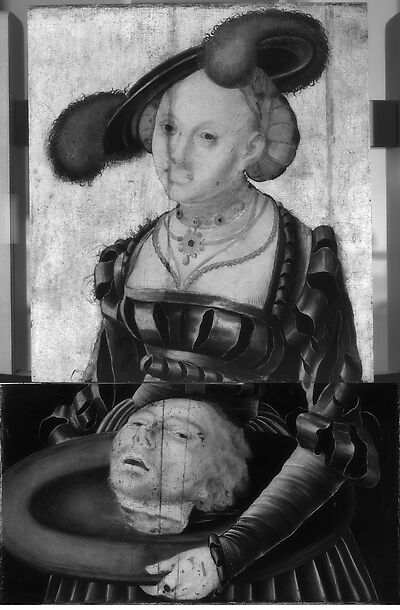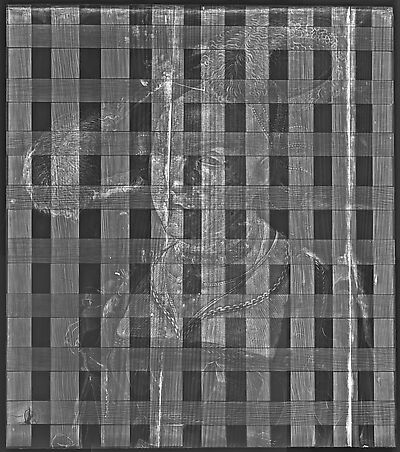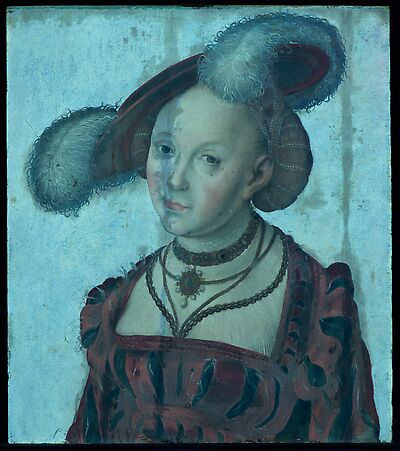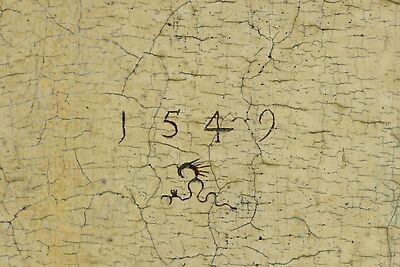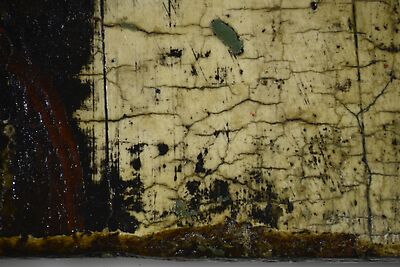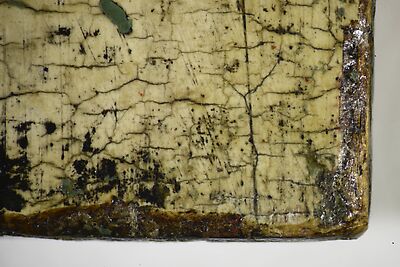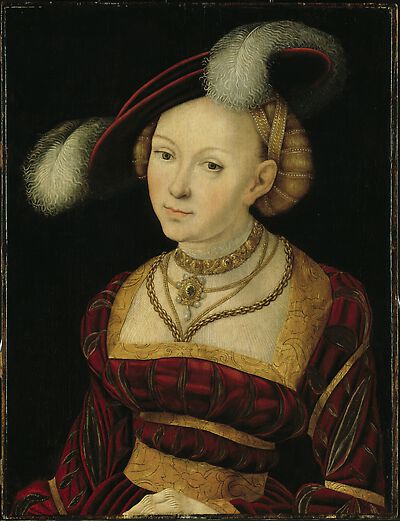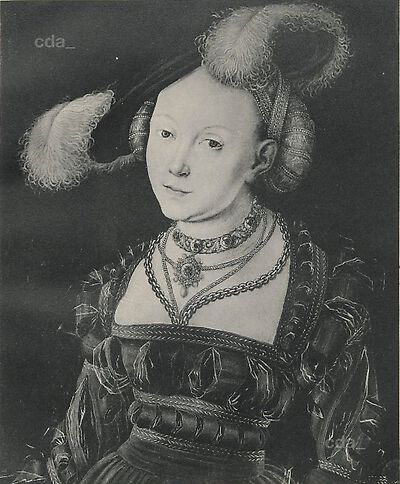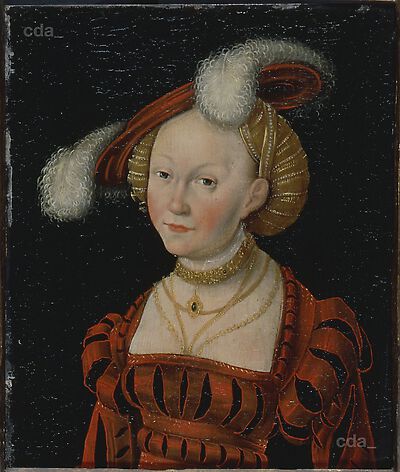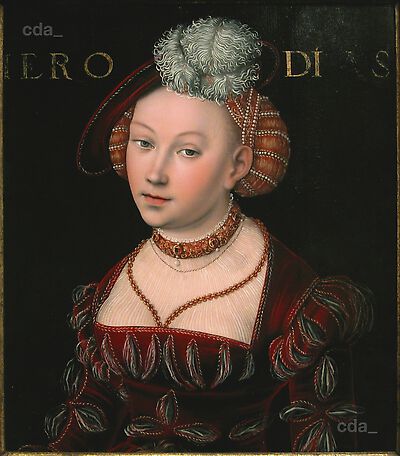- Attributions
-
Lucas Cranach the Elder
Workshop Lucas Cranach the Elder
Attributions
| Lucas Cranach the Elder | [Exhib. Cat. Gotha 2015, 278, No. 99] |
| Workshop Lucas Cranach the Elder | or Follower of Lucas Cranach the Elder 'L. Cranach (Werkstatt)' 'Akte 3425 I und II, Schloßmuseum, [...], Galerie Buck an Schenk zu Schweinsberg am 2.6.1936 nach Friedländer und Buchner späte Werkstattarbeit Cranachs bzw. Schule, lt. Buchner noch nicht einmal das. Galerie Abels schickt im Oktober 1936 "das blutige Haupt und den Rahmen" nach Gotha zurück.'[1] [1][Exhib. Cat. Gotha 1994, 52] |
| Circle of Lucas Cranach the Elder | 'als Schule L. Cranach d. Ä.' 'Schule Cranachs' [1][Exhib. Cat. Gotha 1994, 52] |
| Lucas Cranach the Younger | Art Dealer P. de Boer, Amsterdam 1972 [Exhib. Cat. Gotha 2015, 278] |
| Follower of Lucas Cranach the Elder | or Workshop Lucas Cranach the Elder |
- Production dates
- about 1535 - 1600
about 1520 - 1535
Production dates
| about 1535 - 1600 | [unpublished examination report Heydenreich, Gras, 21.10.2024] |
| about 1520 - 1535 | [Exhib. Cat. Gotha 2015, 278-279, under No. 99] |
- Dimensions
- Dimensions of support: 54 x 47.5 cm (originally 84 x 57 cm)
Dimensions
Dimensions of support: 54 x 47.5 cm (originally 84 x 57 cm)
[Art Dealer P. de Boer, Amsterdam 1972, in: Exhib. Cat. Gotha 2015, 278]
- Signature / Dating
None
- Owner
- Private Collection
- Repository
- Private Collection
- CDA ID
- PRIVATE_NONE-P280
- FR (1978) Nr.
- FR-none
- Persistent Link
- https://lucascranach.org/en/PRIVATE_NONE-P280/
